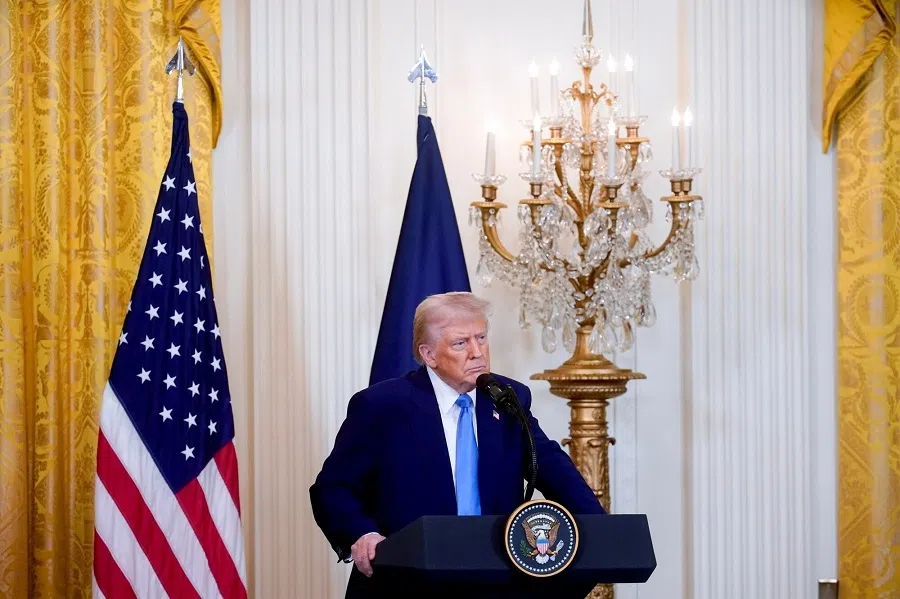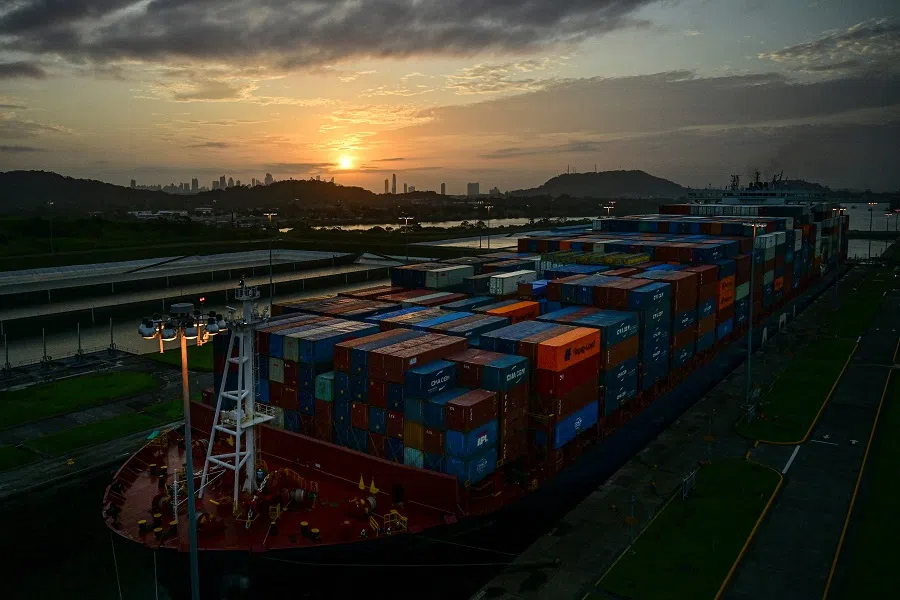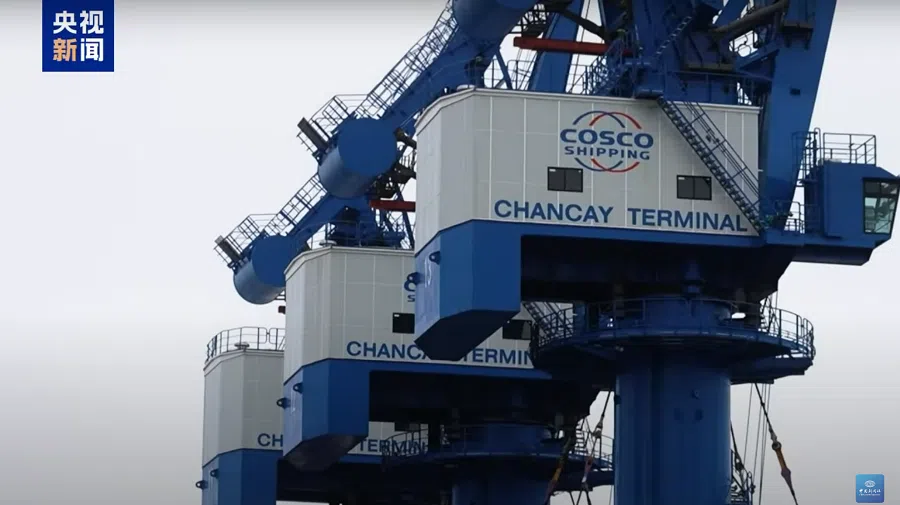Can Panama’s ‘BRI-xit’ derail China’s Belt and Road?
Taking Panama’s exit from China’s BRI as a starting point, EAI senior research fellow Yu Hong explores the larger issue of the US’s growing discomfort at China gaining a strategic foothold in its own backyard.

In February 2025, Panama’s President Mulino announced his decision to withdraw from the Belt and Road Initiative (BRI) and he said that Panama had already officially provided Beijing with the required 90-day notice of its plan to terminate the memorandum of understanding (MOU) on the BRI which was signed in 2017. During a press conference, Mulino said, “I do not know what was the intention of those who signed this agreement with China. What are the great things that this Belt and Road Initiative has brought to the country?”
Mulino’s announcement came just a few days after he met with US Secretary of State Marco Rubio who had expressed US concern about China’s influence over the western hemisphere in general and the Panama Canal in particular. Under pressure from the US, Mulino also signalled that the Panamanian government will review agreements with China and the Chinese firms. The Panama authorities had already recently ordered an audit of CK Hutchison Holdings Limited, which is a Hong Kong-based company. The results of this audit could potentially result in the termination of the contract and the end of the company’s operations of two ports at both ends of the Panama Canal.
This signals that the second Trump administration will refocus US diplomacy on the western hemisphere in order to counter the expanding Chinese influence in the region.
Both US President Donald Trump and Rubio warned that the US would take all measures necessary, including use of force, to regain control of the Panama Canal if Panama did not take immediate steps to end what Washington called China’s influence and control over the Panama Canal. Trump has repeatedly expressed this intention since his re-election last November, and he also made the argument for regaining control of the Panama Canal in his inauguration speech. Consequently, Panama has been facing mounting pressure over its ties with China from the US since Trump took office in January this year.
US’s ‘muscular approach’ working?
Unsurprisingly, Rubio hailed Mulino’s decision to withdraw from China’s BRI as a “great step forward” for US-Panama relations. US pressure has forced the Panamanian government to address US concerns and to pull out of China’s BRI. On the surface, it seems that Trump’s “muscular approach” has succeeded.

Panama was the first country that Rubio visited as the leading US diplomat, as part of his trip to Central America. This signals that the second Trump administration will refocus US diplomacy on the western hemisphere in order to counter the expanding Chinese influence in the region.
The Panama Canal was built by the US between 1904 and 1914 to connect the Atlantic and Pacific Oceans. The ownership of the canal was transferred back to Panama in 1999 under bilateral US-Panama treaties. The Panama Canal is a vital passage for global shipping business, handling around 6% of global maritime trade. The canal is also the most important economic engine and source of revenue for Panama.
Meanwhile, Chinese Assistant Foreign Minister Zhao Zhiyuan summoned Panama’s ambassador to China Miguel Humberto Lecaro Barcenas and lodged solemn representations on 8 February, a day after the Panamanian president’s public announcement. Beijing warned Panama that its decision to withdraw from the BRI will have consequences. In a statement from China’s Ministry of Foreign Affairs, Zhao said: “China deeply regrets Panama’s recent announcement that it will terminate the MOU on BRI. … Reversing course on the Initiative and disregarding the expectations of both nations is not in line with Panama’s fundamental interests”.
From Beijing’s perspective, the BRI has brought tangible benefits to Panama and its people. It is understandable that Beijing is disappointed over Panama’s intention to pull out of the BRI, which is China’s main infrastructure and investment strategy. The BRI has formed a key part of China’s foreign policy under President Xi Jinping since 2013. China also aims to boost its global influence by leveraging the BRI, regionally as well as globally.
Panama was the first Latin American country to join the BRI, in November 2017, soon after it established diplomatic relations with Beijing. Ironically, Panama was also the first Latin American country to express its intention to end cooperation with China’s BRI.
However, the Hong Kong National Security Law imposed by Beijing in 2020 could allow the Chinese government to gather sensitive information from Hong Kong-based companies. In essence, China can still exert indirect control over the critical ports located at both ends of the canal.

Panama, a small Central American country, holds strategic importance and plays an important role in international maritime trade through its control of the Panama Canal, which is one of the most vital maritime passages in the world. The Panama Canal allows cargo ships to bypass the long and costly trip around the southernmost tip of South America, thereby substantially reducing both the transport time and cost to the global shipping industry.
Operated by Hong Kong is now a problem
For the US, the real issue is the expanding Chinese commercial presence and growing geopolitical influence in the western hemisphere. As evidence of China’s influence, CK Hutchison Port Holdings Limited, a Hong Kong-list conglomerate, has been operating the Port of Balboa and Port of Cristobal on both the Atlantic and Pacific sides of the Panama Canal since 1997. The 25-year contract for Hutchison’s operation of ports was renewed in 2021. These ports are not part of the Panama Canal’s operations, but are two out of five ports in the vicinity. The Hutchison-operated ports serve vessels carrying about 40% of cargo containers that pass through the canal.
CK Hutchison Holdings Limited is a global port investor. Although it is owned by Hong Kong’s billionaire Li Ka-shing, it is not a state-owned enterprise of China, is located outside the Chinese mainland, and the company’s business and project investments have no direct links with the BRI. However, the Hong Kong National Security Law imposed by Beijing in 2020 could allow the Chinese government to gather sensitive information from Hong Kong-based companies. In essence, China can still exert indirect control over the critical ports located at both ends of the canal. Beijing has gained a strategic foothold in a region which many lawmakers and the government in Washington consider to be part of America’s backyard.
This small country serves as a regional gateway and the transshipment hub for China to expand its economic and geopolitical presence in Latin America. Due to Panama’s privileged geography that offers access to both the Atlantic and Pacific Ocean, Beijing has in recent years deployed resources to develop its relations with Panama, primarily leveraged on the BRI.
According to the “China Global Investment Tracker” data released by the American Enterprise Institute, compared to the corresponding figure of the stock of Chinese investments of US$640 million prior to 2017, the stock of Chinese investments and contracts in Panama had increased by more than 2.5 times and has amounted to US$1.61 billion since 2017 when Panama joined the BRI. Many giant Chinese construction conglomerates have been operationally active in Panama’s infrastructure development and energy sectors, including China Communications Construction, China Energy Engineering and PowerChina, etc. Chinese shipping firms like COSCO Shipping have been more active around the canal.
... Panama is part of the second Trump administration’s grand plan to counter China’s rising global influence by targeting the “weak link” countries and “swing states” along the BRI routes.
Threats to the US’s national economic security
The Panama Canal is a crucial passage for US trade and its military. The growing Chinese influence naturally unsettles Washington. To the US, maritime infrastructure such as the Panama Canal is crucial to its national economic security.

Given its influence over the canal via the Hong Kong firm, China can potentially gather intelligence about the American ships including transshipment patterns, restrict the entry of American commercial and military ships’ passage through perceived “economic chokehold” of the canal, or even shut it down at its own will in the case of any military showdown between China and the US.
Although China’s economic engagement with Panama has been strengthening under the BRI framework since 2017, Panama’s relations with the US are profound and longstanding. The US is both Panama’s biggest customer and its largest foreign investor. According to the cargo statistics provided by the Panama Port Authority, in 2024, the volume of cargo transited via the Panama Canal with origin and destination to the US was 99.6 million tons, which was more than four times higher than that of China, with 23.8 million tons of cargo transited. The Canal’s other major customers include South Korea, Chile, Mexico, Peru and Japan.
As for the inflow of foreign direct investment to Panama, China accounted for merely 1% of Panama’s total FDI, primarily focusing on sectors like infrastructure construction and logistics, compared to around 20% of foreign investment received from the US.
Therefore, the second Trump administration can exert substantial economic leverage over Panama. Over 70% of ships and canal cargo passing through the Panama Canal have either come from or were headed to a harbour located in the US. The canal is critical to the US supply chain.
A ‘BRI-xit’: eye on other BRI ‘weak links’
Broadly speaking, Panama is part of the second Trump administration’s grand plan to counter China’s rising global influence by targeting the “weak link” countries and “swing states” along the BRI routes. Already, 152 countries have signed up for the BRI, including more than 20 countries located in Latin America. Against the backdrop of intensified strategic competition between China and the US, other BRI countries, in particular small and “weak link” ones like Panama, will face tough choices in picking a side in the coming years.
Weighing up the various benefits of investment and trade promotion under the BRI, it is unlikely that other BRI countries will choose to follow in the footsteps of Panama...
There has been some speculation that the second Trump administration’s next target in relation to China’s BRI may be the Port of Chancay, which is located north of Lima, the capital of Peru. The Port of Chancay was built by COSCO Shipping, a giant Chinese logistics conglomerate, with an investment by them of US$1.3 billion. Port of Chancay has been in operation since November 2024. COSCO Shipping holds a 60% stake and has been granted exclusive rights for port operation. The Chancay Port is a flagship project of the BRI in Latin America. When President Xi Jinping made a state visit to Peru last November, he attended the opening ceremony of Chancay Port.
Port of Chancay, with its state-of-the-art automated port loading and unloading facilities, has the handling ability to berth large-scale container ships. Large cargo ships from China and other Asian countries no longer have to dock first at the American ports or Mexico to them be dispersed to other small and medium-sized cargo ships for transshipment to Central and South America. This will in effect impact international trade and shipping business of the US.
Nevertheless, Peru is not Panama. China has developed longstanding and deep economic and trade ties with Peru, and is Peru’s largest trading partner and a major source of its foreign direct investment. Compared to the corresponding figure of 13% for the US, the Chinese market accounted for around 34% of the total value of Peru’s exports. In light of its trade and investment interests, Peru is unlikely to abandon the BRI and distance itself from China.

Although Panama’s “BRI-xit” may bolster US determination and resolve to counter Chinese global influence, the impacts of Panama’s withdrawal on China’s BRI push will be limited, given that China has committed vast outbound investments in maritime infrastructure worldwide, extending from Sri Lanka’s Hambantota Port, Pakistan’s Gwadar Port, to Greece’s Piraeus Port and Peru’s Chancay Port, just to name a few.
Weighing up the various benefits of investment and trade promotion under the BRI, it is unlikely that other BRI countries will choose to follow in the footsteps of Panama by walking away from the BRI and its associated investment and trade promotion benefits, and risk upsetting Beijing. Taking the Latin American countries as an example, China is both their largest trading partner as well as a major source of foreign direct investment in the infrastructure and energy sectors of these countries.
Although the US may want the other Latin American countries to pull out of the BRI and distance themselves from China, it is currently unable to offer credible alternatives for these countries in terms of financing their infrastructure development or boosting regional connectivity, and this is an important consideration in influencing the decisions of developing countries on their engagement with the BRI.





